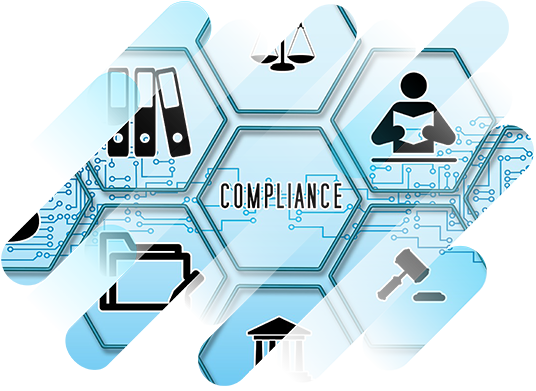Navigating IT Compliance Ensuring Security Adherence in a Dynamic Landscape

Navigating IT Compliance Ensuring Security Adherence in a Dynamic Landscape
Introduction
In an increasingly digital world information technology IT compliance plays a pivotal role in safeguarding sensitive data ensuring operational efficiency mitigating risks associated with technological advancements. As businesses rely more on technology, compliance frameworks serve as guiding principles to maintain regulatory adherence bolster cybersecurity build trust among stakeholders.
The Importance of IT Compliance
IT compliance encompasses a set of rules regulations standards that organizations must adhere to while handling data implementing technologies managing operational processes Compliance frameworks such as GDPR HIPAA PCI DSS others are designed to protect consumer privacy secure sensitive information ensure ethical legal responsibilities
Failure to comply with these regulations can result in severe consequences including hefty fines reputational damage legal liabilities operational disruptions. Moreover as cyber threats evolve maintaining compliance becomes instrumental in fortifying defenses against data breaches ransomware attacks other security vulnerabilities.
Challenges in Achieving IT Compliance:
Organizations encounter various challenges when striving for IT compliance. The rapid pace of technological innovation often outpaces regulatory updates making it challenging to align with constantly evolving standards. Additionally the complexity of compliance requirements across different industries geographical regions further complicates the compliance landscape.
Resource constraints budget limitations the shortage of skilled professionals exacerbate these challenges. Many companies struggle to allocate adequate resources and expertise to maintain a robust compliance posture. Moreover the lack of a unified approach to compliance within organizations can lead to fragmented strategies vulnerabilities.
Strategies to Navigate IT Compliance Successfully
To effectively navigate IT compliance challenges, organizations can adopt several strategies
Comprehensive Risk Assessment
Conducting regular risk assessments helps identify vulnerabilities prioritize threats allocate resources accordingly. It enables organizations to develop targeted compliance strategies tailored to their specific risk profiles.
Robust Compliance Frameworks
Implementing a structured compliance framework that aligns with industryspecific regulations is crucial. This involves creating policies procedures controls that address compliance requirements while considering the organizations unique needs.
Continuous Monitoring and Adaptation
Embracing a culture of continuous monitoring allows for realtime identification of compliance gaps prompt remediation. Organizations should stay updated with regulatory changes adjust their strategies accordingly to maintain compliance.
Employee Education and Training
Educating employees about compliance requirements best practices the importance of adhering to policies is essential. Regular training sessions can enhance awareness promote a culture of compliance throughout the organization.
Leveraging Technology
Utilizing advanced technologies such as AIdriven compliance tools encryption automated monitoring systems can streamline compliance efforts and enhance overall security posture.
Conclusion
In todays digital landscape achieving maintaining IT compliance is a multifaceted endeavor critical to an organizations success and sustainability. By acknowledging the significance of compliance addressing challenges proactively implementing robust strategies businesses can navigate the complexities of IT compliance effectively while fortifying their defenses against evolving cyber threats Prioritizing compliance not only mitigates risks but also builds trust ensuring a secure and resilient operational environment in an everchanging technological landscape.
IT compliance brings several benefits to organizations spanning various aspects of operations security reputation customer trust Here are some key benefits
Enhanced Security
Compliance frameworks often require stringent security measures. Adhering to these standards strengthens an organizations cybersecurity posture reducing the risk of data breaches cyberattacks unauthorized access to sensitive information.
Risk Mitigation
Compliance frameworks typically involve risk assessments and mitigation strategies. By identifying addressing potential risks organizations can proactively reduce vulnerabilities prevent potential threats safeguarding their operations assets.
Legal and Regulatory Adherence
Compliance ensures that organizations meet legal regulatory requirements specific to their industry This adherence helps avoid legal consequences fines penalties resulting from noncompliance thereby preserving the organizations reputation financial stability.
Customer TrustReputation
Compliance demonstrates a commitment to protecting customer data respecting privacy rights. This fosters trust among customers stakeholders partners enhancing the organizations reputation credibility in the market.
Operational Efficiency
Implementing compliance frameworks often requires streamlining processes establishing clear policies defining protocols. This leads to improved operational efficiency reduced errors standardized practices resulting in cost savings and better resource utilization.
Competitive Advantage
Compliance can serve as a differentiator in the competitive landscape. Organizations that prioritize maintain robust compliance frameworks often gain a competitive edge by showcasing their commitment to security reliability ethical business practices.
Global Market Access
Compliance with international standards and regulations facilitates entry into global markets. It ensures that organizations meet the requirements of different regions enabling smoother expansionpartnerships across borders
Continual Improvement
Compliance frameworks often emphasize continuous monitoring evaluation improvement. This culture of continual enhancement allows organizations to adapt to evolving threats, technology changes regulatory updates staying agile resilient.
Stakeholder Confidence
Compliance efforts provide assurance to stakeholders including investors board membersregulatory bodies that the organization operates responsiblymitigates risks effectively, fostering confidence support.
Alignment with Best Practices
Compliance frameworks are often built on industry best practices standards. Following these guidelines helps organizations align their operations with recognized benchmarks, ensuring a high level of quality and professionalism.
Overall IT compliance is not merely a regulatory obligation but a strategic investment that fortifies an organizations security operations reputation while instilling trust among stakeholders in an increasingly interconnected data driven world.